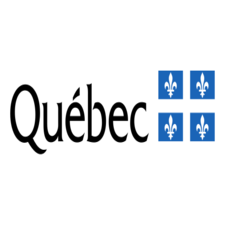Level curve
Type of resources
Topics
Keywords
Contact for the resource
Provided by
Formats
Representation types
Update frequencies
status
-

__The link: *Access the data directory* is available in the section*Dataset Description Sheets; Additional Information*__. Products derived from lidar (Light Detection and Ranging) are generated as part of the [__provincial lidar sensor data acquisition project__] (https://mffp.gouv.qc.ca/documents/forets/inventaire/Analyse_retombees_lidar-Finale.pdf). It is therefore to facilitate the use of raw lidar data and optimize its benefits that the Ministry of Natural Resources and Forests (MRNF) generated and made available products derived from lidar in a user-friendly format. Lidar technology makes it possible to accurately provide information such as ground altitude, forest cover height (canopy), slopes, and contour lines. Here is the list of the five derivatives: + Digital terrain model (spatial resolution: 1 m) + Digital terrain model in shaded relief (spatial resolution: 2 m) + Canopy height model (spatial resolution: 1 m) + Slopes (spatial resolution: 2 m) + Level curve (range: 1 m) This data covers almost all of the southern part of the province. This map is distributed by map sheets at a scale of ** 1:20,000**. __ ⚠️ 1) Note that__ the resolution of the following products (digital terrain model, digital terrain model in shaded relief, canopy height model and slopes) **has been slightly degraded** when viewed in the interactive map to ensure efficient display. __ ⚠️ 2) Note that __ **the planimetric and altimeter accuracy of the curves is variable**, but inevitably lower than that of the lidar surveys used to generate them. Moreover, it is recommended to use these level curves only for visual representations, and not for quantitative analyses. **This third party metadata element was translated using an automated translation tool (Amazon Translate).**
-

High-resolution relief data produced from LiDAR surveys and limited to crop plots are particularly useful in the agricultural sector since they make it possible to model surface drainage in order to identify drainage problems or the risks of soil erosion. Agronomic interpretation will take advantage of this information not only in the form of the numerical terrain model and the shading, but also with the level curves, flow paths and basins located inside the cultivated plots, as delimited by the database of declared agricultural plots and productions (BDPPAD) of the Financière Agricole du Québec (FADQ). Level curves of 1 m covering the entire treated territory excluding cultivated plots (agricultural, forest, urban, etc.) are also available. These new data are the result of a collaboration between the MRNF and the MAPAQ, and they are offered thanks to the open valorization of data initially derived from LiDAR to the MRNF Forest Inventory Directorate (DIF). We hope that this data will support better soil and water management interventions, in order to mitigate the consequences of climate change, and to promote sustainable agriculture.**This third party metadata element was translated using an automated translation tool (Amazon Translate).**
 Arctic SDI catalogue
Arctic SDI catalogue